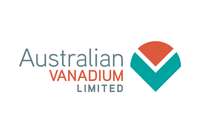Could South Africa’s Vanadium Loss be South America’s Gain?
The vanadium industry needs new frontiers — deposits in Brazil and Chile may have just what the sector is looking for.
Major vanadium producer EVRAZ (LSE:EVR) is getting out of South Africa, marking a critical turning point for the vanadium sector.
EVRAZ announced late in March that it will divest its 85-percent stake in South African vanadium mining and processing operations. The move is widely seen as a condemnation of South Africa’s mining sector, where EVRAZ’s operations have lately been disrupted by the labor unrest plaguing the country.
The company is selling the operations to its black empowerment partner for total consideration of $320 million.
The move is in line with the activities of other firms, such as Rio Tinto (LSE:RIO,ASX:RIO,NYSE:RIO) and India’s GMR Infrastructure (BSE:532754), which have decided that South Africa’s political and operational risks are simply too high.
But for the vanadium industry, these circumstances present a quandary.
South Africa produced 35 percent of the world’s vanadium in 2012, according to estimates from the US Geological Survey (USGS). It holds a quarter of the world’s known reserves of the metal.
The type of vanadium that it holds is also important. South Africa’s magmatic deposits are largely vanadium-bearing magnetite, which can produce shipping-grade iron and also titanium as a by-product.
Having these co-metals to sell significantly lowers the unit production cost of a pound of vanadium. Because of this financial advantage, a large part of the world’s vanadium output comes from combined iron-vanadium mines, which are generally more profitable than mines producing vanadium alone.
But with a third of the world’s cheap vanadium-in-magnetite production now in jeopardy because of South Africa’s deteriorating mining sector, where can the vanadium sector turn to fill the gap?
South American magnetite
South America may be the answer.
For decades, groups like the USGS have highlighted known deposits of vanadium-bearing magnetite on the southern continent, but little development has taken place in the space until recently.
That’s because some of the most significant vanadium deposits are in Central Brazil, a region that during the last half decade has become much more open to foreign miners — especially juniors.
That means some of the nation’s iron-vanadium projects, which are highly competitive with similar deposits in South Africa, are now moving forward.
South America’s most advanced vanadium project is in Maracás, Brazil. Over the last two years, Largo Resources (TSXV:LGO) has proved up a resource of 24.6 million metric tons (MT) grading better than 1-percent vanadium at its Gulcari A deposit.
This grade is high compared with other potential vanadium-producing districts, such as the uranium-vanadium deposits in the Southwestern US. Those typically run less than 0.5-percent vanadium.
Like South Africa’s deposits, Maracás also holds expansion potential. Mineralization occurs in a cluster of pods, and in five zones surrounding the central resource, Largo has identified an additional 27.8 million MT of inferred resource.
This kind of scale is critical if a new vanadium district is to be advanced.
The by-product advantage
Recent studies on Maracás show that it also possesses many of the processing advantages enjoyed by South African vanadium deposits.
A conceptual processing circuit for the project envisions crushing and grinding the iron-vanadium ore, then using simple magnetic separation to concentrate magnetite.
Following roasting and leaching, vanadium would be siphoned off, leaving behind a residue containing approximately 60-percent iron along with 5-percent titanium. Both are potentially valuable by-products.
Another intriguing aspect of Brazilian vanadium deposits is that they may contain precious metals. The ores in the country have long been observed to contain substantial quantities of platinum group elements (PGEs).
Although Largo did not calculate PGEs as part of its most recent resource estimation, past studies give some idea of the potential. A 2007 resource estimate for the Gulcari A zone shows an average platinum plus palladium content of 0.3 g/t. That is a significant amount of this high-value accessory.
Researchers have reported PGE-enriched zones within magnetite here at even better grades. A 2002 study on Maracás shows zones of up to 4 g/t platinum along with 1 g/t palladium.
Next steps
Maracás is the pioneering project for South American vanadium, but other companies are now recognizing the continent’s potential.
In April 2012, Brazil specialist Lara Exploration (TSXV:LRA) acquired the Itaítuba iron-vanadium project in the northern part of the country.
Like other magnetite projects, Itaítuba appears to hold potential for the production of multiple metals. Surface samples show 48-percent metallic iron and 22-percent titanium dioxide, along with 0.45-percent vanadium.
The company believes the property could produce direct-shipping iron ore, a high-value product that would make co-product vanadium very cheap to produce on a unit basis.
There’s also vanadium-from-magnetite potential outside of Brazil.
The El Romeral magnetite deposit in Chile has produced intermittently throughout the last century, putting out a concentrate of 62-percent iron and up to 0.8-percent vanadium pentoxide. The iron ore mine was acquired by the CAP Group in 1971, and in 2011 it produced 3.6 million MT of iron ore, according to CAP’s annual report from the same year.
El Romeral is just one deposit within a belt of vanadium-bearing iron prospects that runs hundreds of kilometers north-south through the cities of Copiopo and Antofagasta. This expansiveness suggests there is a vast zone for exploration.
A strong local steel sector in Chile may also give a boost to iron-vanadium projects.
Vanadium from magnetite is a proven process that is favored globally for vanadium production, meaning that South America’s deposits are a logical next step for a sector in flux. Investors would do well to keep an eye on this southern space.
Securities Disclosure: I, Dave Forest, do not hold equity interest in any companies mentioned in this article.


